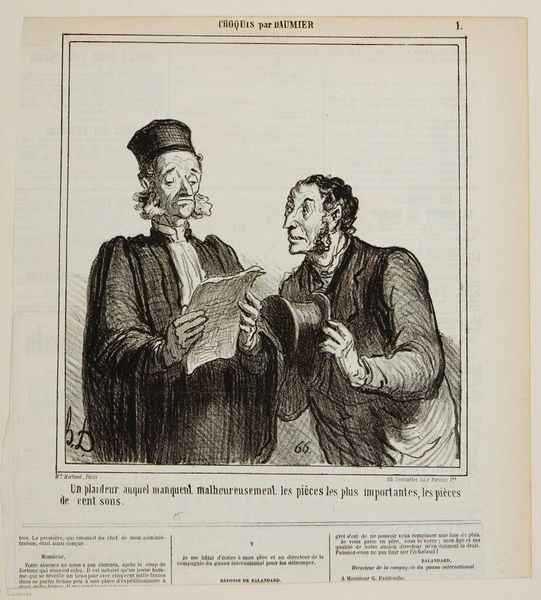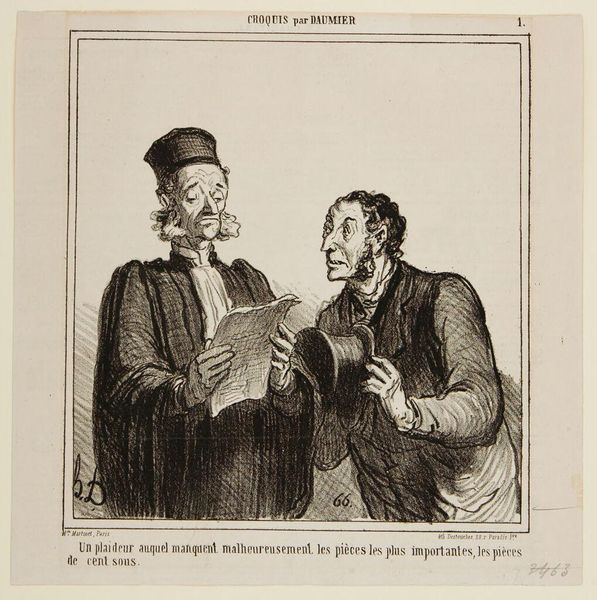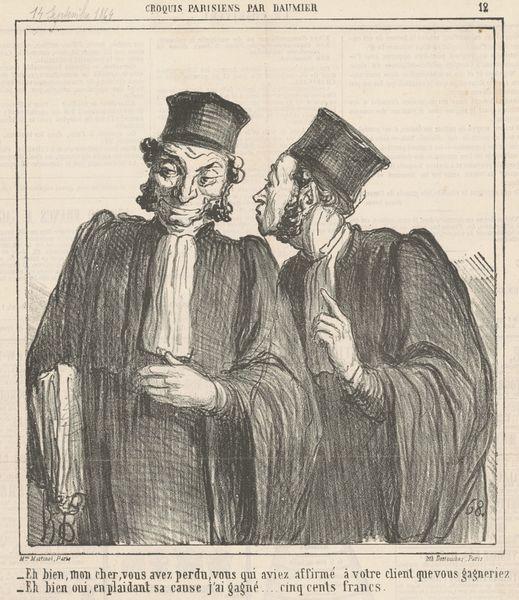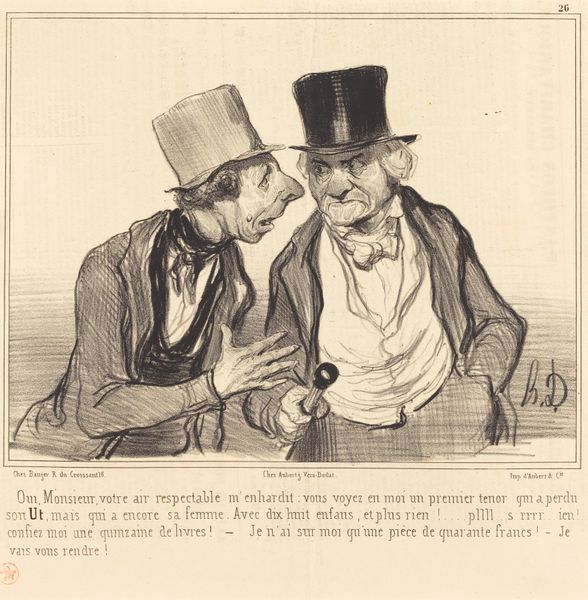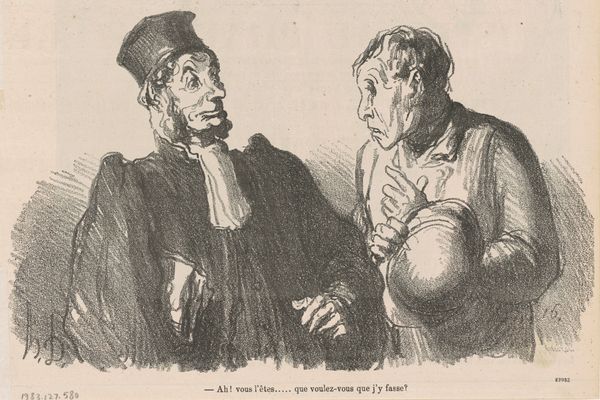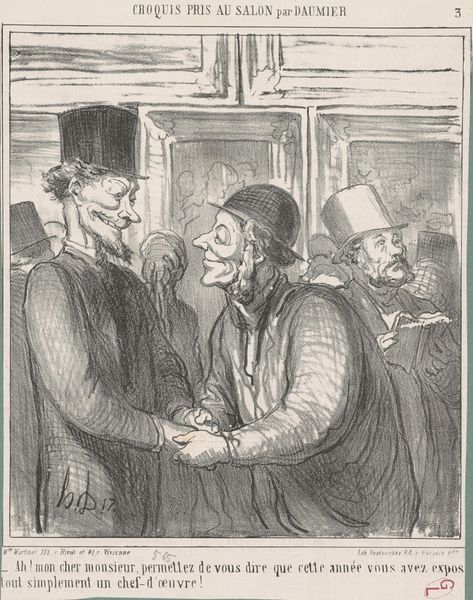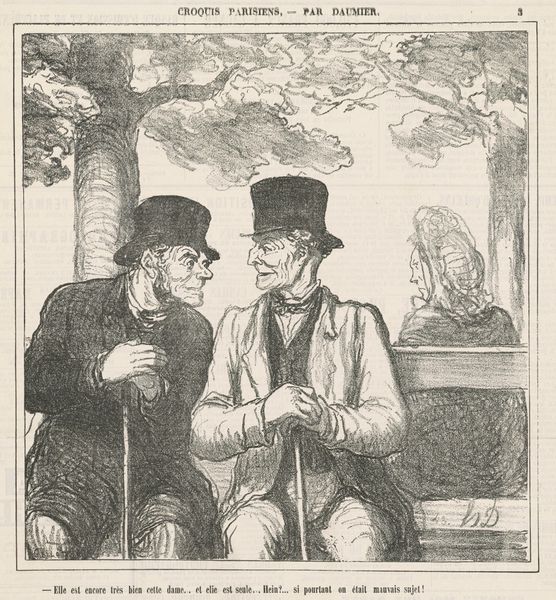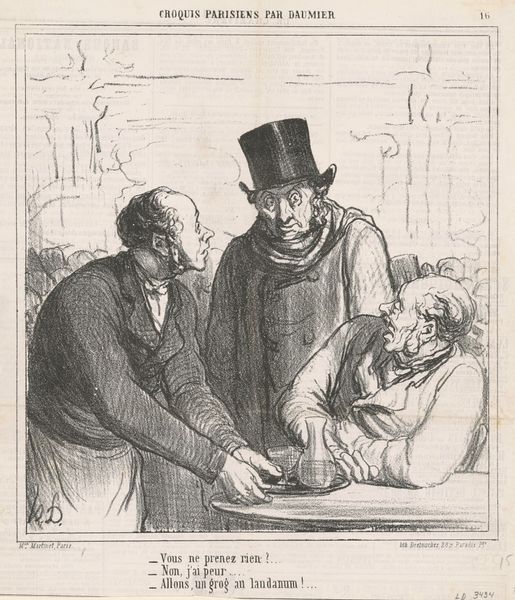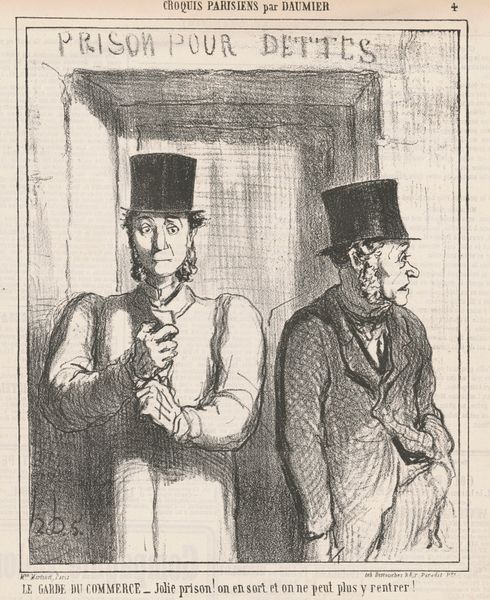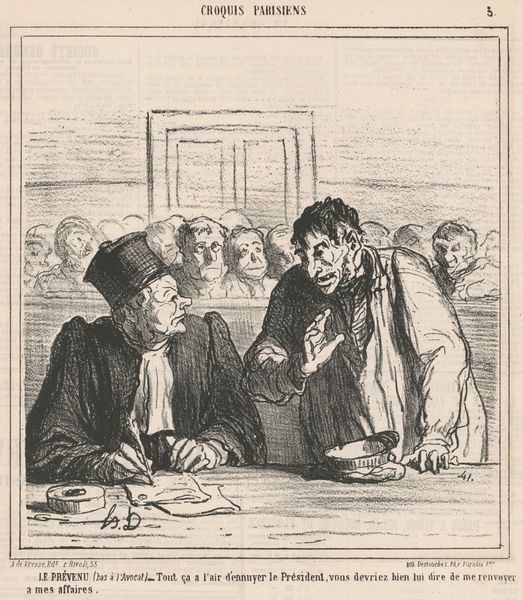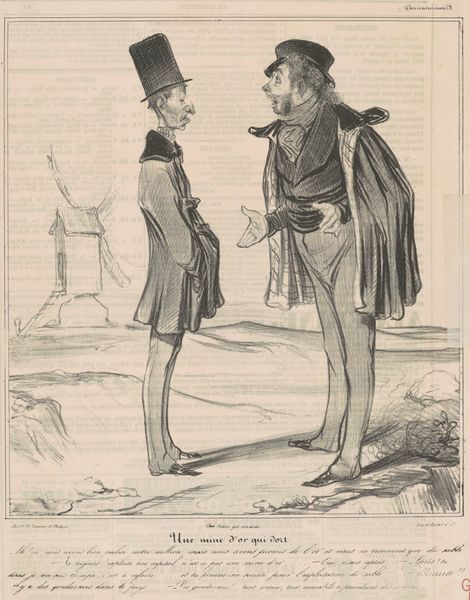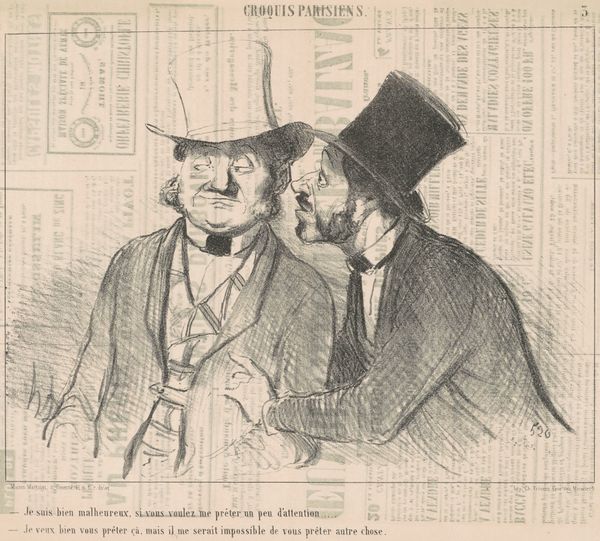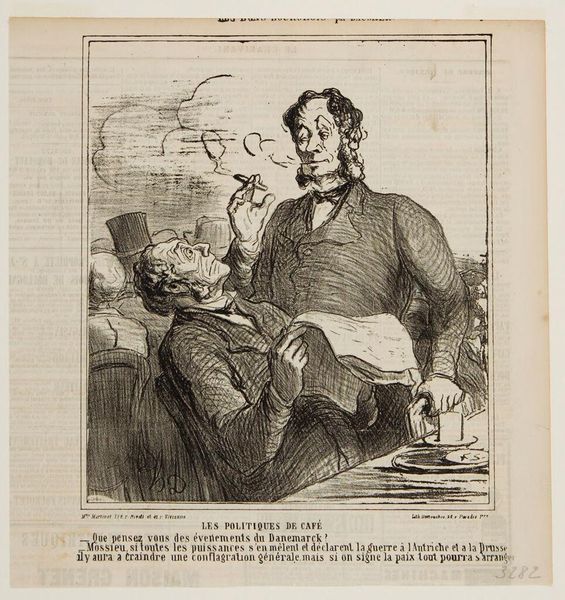
lithograph, print
#
aged paper
#
16_19th-century
#
lithograph
# print
#
caricature
#
old engraving style
#
romanticism
#
19th century
#
genre-painting
#
realism
Copyright: National Gallery of Art: CC0 1.0
Curator: We're looking at a lithograph by Honoré Daumier, dating back to the 19th century. It's titled "Un plaideur auquel manquent...". Editor: It’s striking how much emotional weight Daumier achieves with just black and white. The slumped posture of both figures communicates a palpable sense of despair and possibly poverty. Curator: Precisely. Observe Daumier’s mastery of line. The hatching and cross-hatching create a rich tonal range that defines the volumes of the figures and suggests the texture of their garments and aged paper. Editor: The roughness of the line contributes to its emotional force too. I wonder what sort of stone he used, what inks, and what the printer's workshop might have been like. And these lines clearly communicate something about their place in the legal system, something about labor, consumption, class disparity. Curator: Indeed, Daumier often explored social and political themes. Look at the juxtaposition. The lawyer, despite his formal attire, exudes exhaustion. The plaintiff, clutching his hat, appears defeated, almost skeletal. Editor: His clothes certainly seem worn and patched. The contrast highlights the uneven distribution of justice, or, shall we say, of economic opportunity, during the era of industrial capitalism and the Bourse, whose impacts Daumier addressed head-on. The title suggests a lack of funds – how does lack of resources preclude accessing justice? Curator: One reading of this could see in Daumier's use of caricature, his exaggeration of the facial features, is a device to critique not just these two individuals, but the legal system as a whole. Editor: The stark visual contrasts certainly intensify the commentary about who has access to it, or conversely, who justice is for. The making of prints like this allowed for a wider audience and public consumption that paintings on view for elite publics never could achieve. Curator: His incisive observations certainly offer food for thought. He used formal elements to convey deep layers of narrative. Editor: It really is compelling to think of lithography's role as an engine to fuel social critique, where art production literally becomes a tool.
Comments
No comments
Be the first to comment and join the conversation on the ultimate creative platform.
